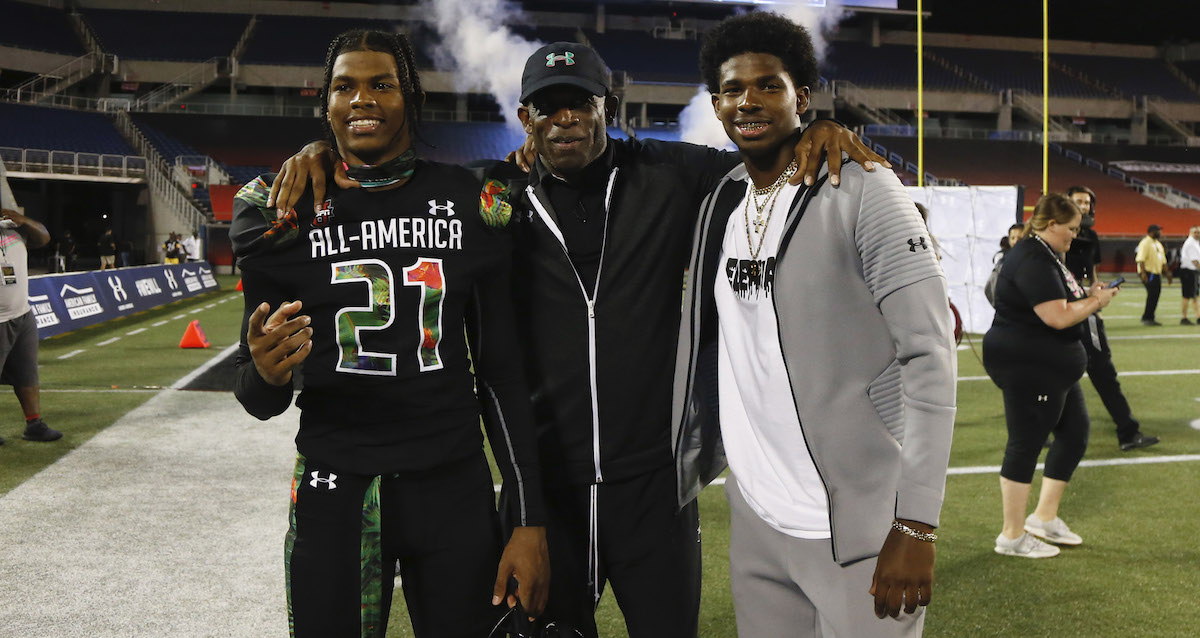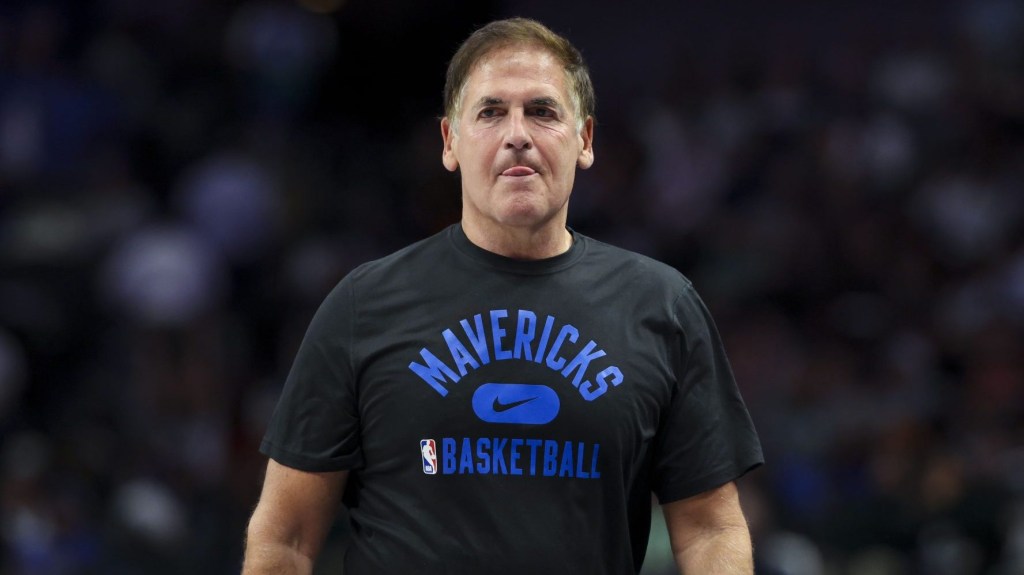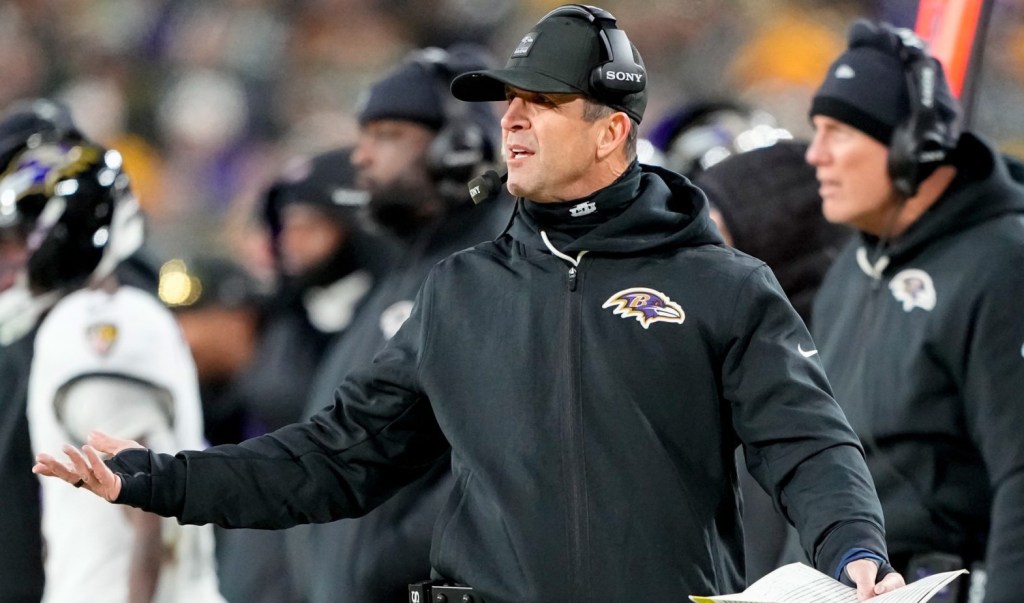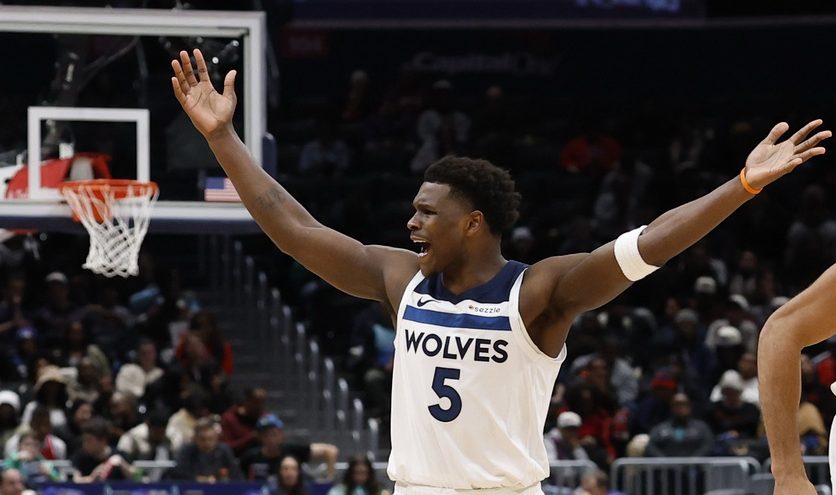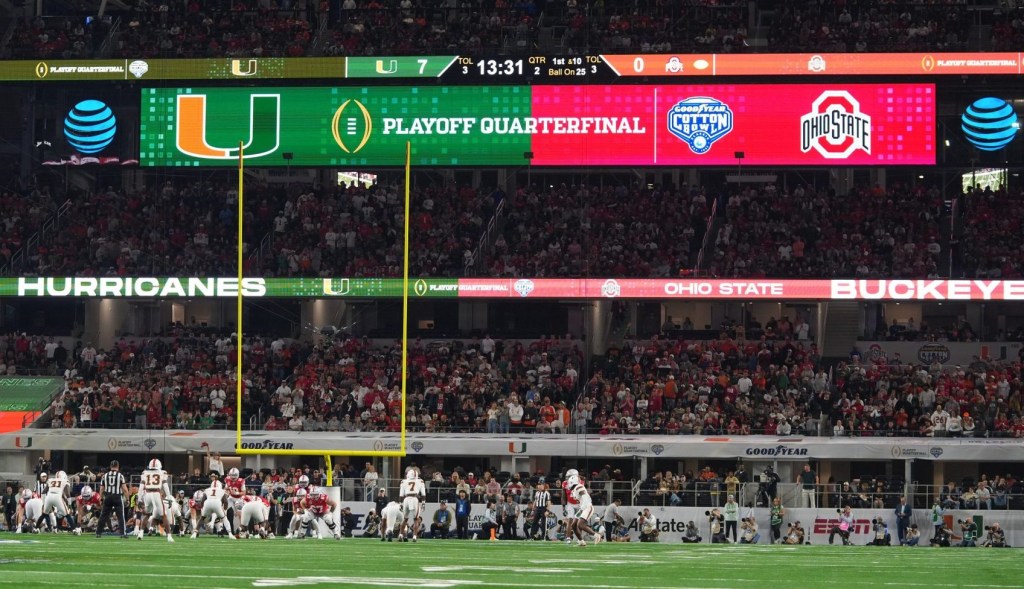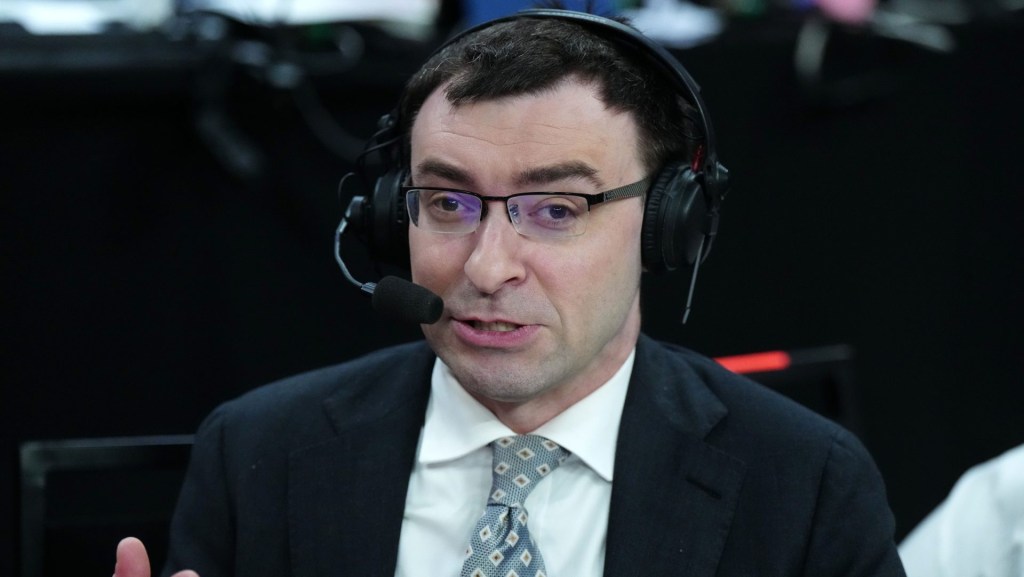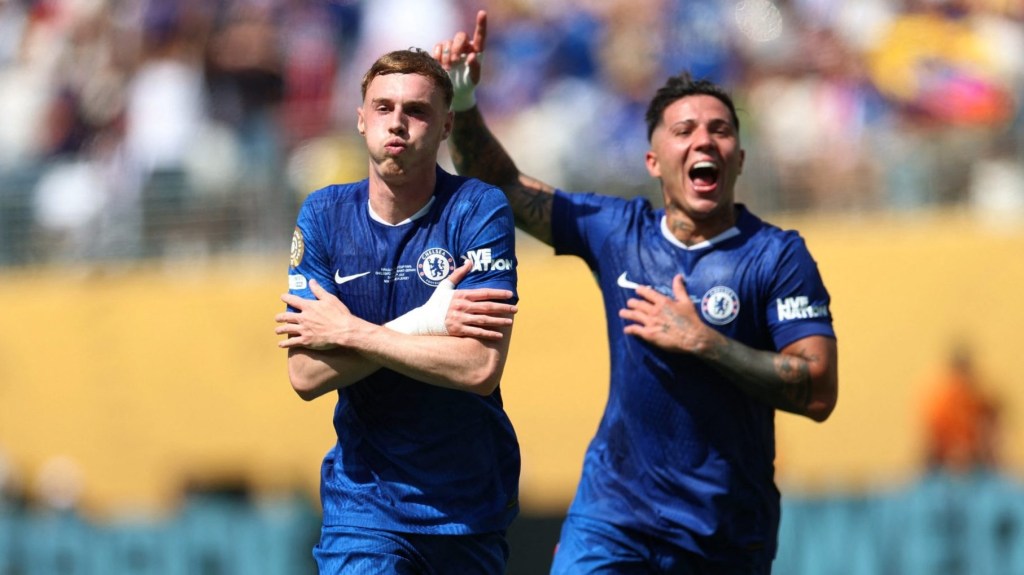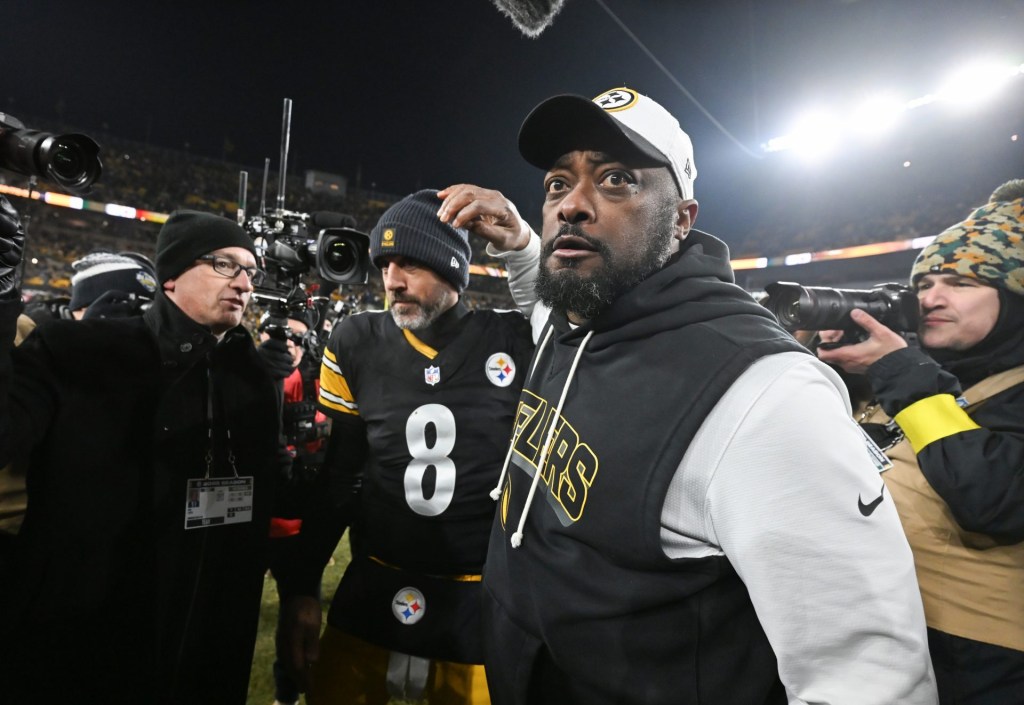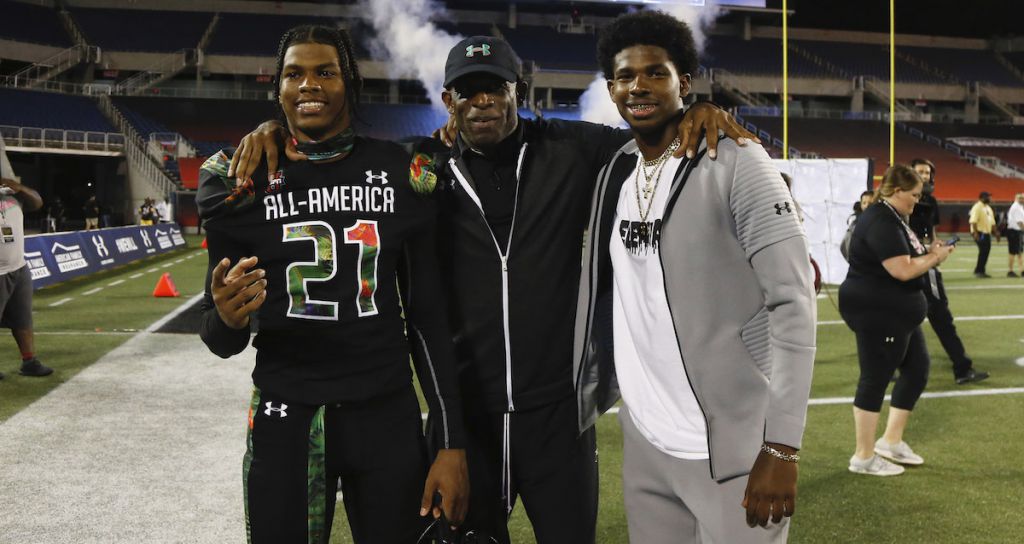
Digital sports network Overtime is going to Primetime with its new slate of football programming.
The three-year-old network targeting Gen Z sports fans will launch five new shows in an expansion of its football coverage, including “Primetime 2.0” with NFL Hall of Famer Deion Sanders and his son Shedeur Sanders. The shows begin premiering Saturday.
Overtime’s dedicated football channel, Overtime SZN, launched last year and has gained nearly 1 million followers. To date, Overtime SZN videos have been viewed more than 130 million times.
The growth of the channel necessitated the strong push into more original football programming, Overtime Chief Content Officer Marc Kohn said. Kohn joined Overtime last spring, coming from Barstool Sports, and has since launched 25 different series with his team.
Along with “Primetime 2.0,” the other new Overtime SZN shows include “King of Friday Night,” a look at Parish Episcopal junior and highly ranked quarterback recruit Preston Stone; “Dual Threat” with Jalen Suggs as he decides to pursue basketball or football; “Bunchie!” which follows 12-year-old Maxwell “Bunchie” Young; and “To The House: The Coach Who Never Punts,” a full-season documentary series about head coach Kevin Kelley and Pulaski Academy.
“In the last year, we spent a lot of time experimenting with what worked inside Gen Z football culture,” Kohn said. “All the data points of what was working as we were experimenting led us to understand what the Gen Z audience has been missing and now we’re double and tripling down.”
As Gen Z is now recognized by Nielsen as the largest potential TV audience, making up 26% of the U.S. population, the young fans haven’t yet been fully captivated by football. According to AdAge, the NFL is losing younger viewers faster than the rest of the population, noting the average delivery of adults 18-34 on a nationally broadcast NFL game was 2.7 million, down 25% compared to 2015. Likewise, the AdAge piece noted the median age of NFL viewers in 2016 was 50 years old, up from 44 years old in 2006.
The hope for Overtime is it will continue to build on the way it captivated other Gen Z sports fans, particularly basketball, as media consumption habits of the generation continue to stymie linear TV productions and “even legacy digital media,” Kohn said. He believes the company has “cracked the code on what Gen Z sports fans will invest 10 minutes consuming on their phones.”
Overtime has grown a network of more than 15 million followers across Instagram, Snapchat, Twitter, YouTube, Facebook and TikTok, and according to the company the audience has quintupled in the past year with Instagram doubling in the past eight months. The network’s videos are now viewed more than 920 million times a month, up from 145 million in January 2018.
Much of the credit Kohn gives heads to a team of young producers he’s curated to ensure the production methods are hitting the right targets.
“We have a lot of talented producers who have figured out how to use modern storytelling tools with old-time storytelling,” Kohn said. “We’re trying to take the helmet off a lot of players and that’s one thing football has struggled with. The best players don’t have their helmets off most of the time. So we want to take the helmet off and show the true personality and charisma of younger players.”
READ MORE: Here to Stay: Generation Z’s Impact On Sports Content Strategy
Some NFL teams are recognizing that and connecting with their audience, like the Los Angeles Chargers and the team’s social strategy. Kohn said the younger players are certainly contributing to that trend and will help the sport transition, as noted by the youthful focus of the Overtime SZN series.
Kohn said the approach of building Overtime as a sports network for Gen Z has been similar to a Netflix approach in building out a portfolio of destination content to create an audience and then building a community around the audience. Creating content to show player personalities without helmets isn’t “rocket science,” Kohn said. The most notable example he uses is the basketball series “Hello Newmans,” a show following the family of basketball players Julien and Jaden Newman in “the perfect microcosm of current-day America.” That series attracted 500,000 viewers within the first two hours it was available on a Saturday.
“All these young players, whatever sport they’re doing, look at their Instagrams – they’re out there creating content for themselves and their friends,” Kohn said. “What we’ve been able to do is take that Instagram storytelling and professionalize it to a degree, and turn it into long-form storytelling that is a faster and quicker place to tell the narratives of players and teams in a different way.”
